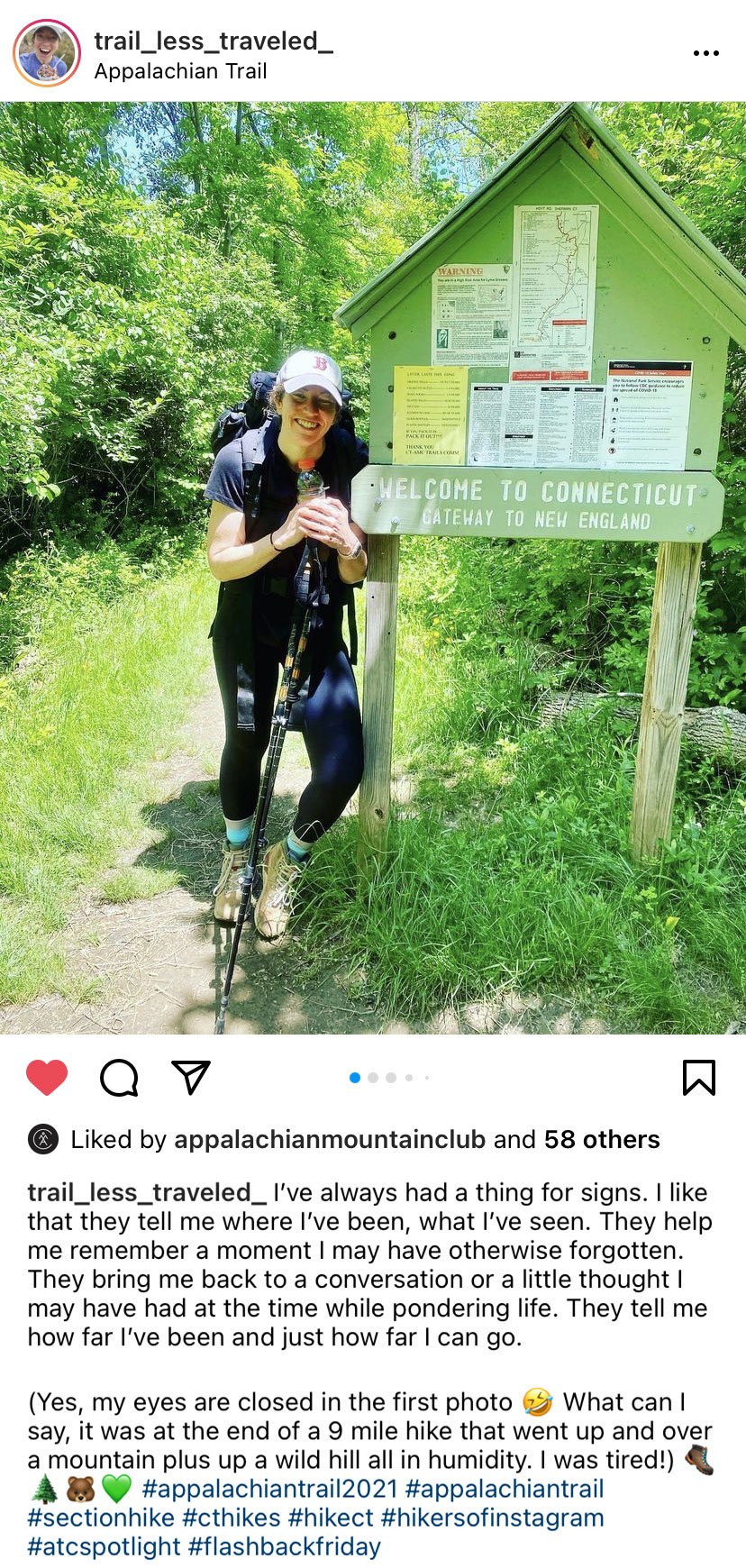July 16, 2021
Trailway News: The Beauty of the Trail
“What makes the Appalachian Trail beautiful?” It’s a question that might receive a different answer from every person you ask. For today’s Trailway News, we are featuring an article by writer Kim O’Connell that explores the beauty found everywhere on the Trail.
Trailing Beauty
By Kim O’Connell
The Appalachian Trail allows us to bypass the intellect and go straight to the heart.
In 2019, The New York Times surveyed scientists, writers, designers, and others about the notion of beauty, asking them to define it and share why it was so important. Their answers varied, of course, but several respondents agreed that beauty has less to do with a certain aesthetic or physical attribute and more to do with how it nurtures and resonates with us as human, living beings.
Fashion designers Lazaro Hernandez and Jack McCullough wrote that beauty can be an “emotional, creative, and deeply spiritual force.” Chef Massimo Bottura wrote that beauty “can be felt through each of our senses, yet it is more magnificent when it transcends all five.” Poet Joy Harjo, the nation’s first Native American poet laureate, wrote of life as a series of beauties, just waiting for us to notice:
Beauty was often long from the reach of her mind and spirit,
When she forgot beauty, all was brutal.
But beauty always came to lift her up to stand again.
We hike on the Appalachian Trail (A.T.) and elsewhere for many reasons — to promote health, to enjoy fresh mountain air, to understand our surroundings or witness a new place, to socialize or, alternatively, get away from the crowds, or to meet a personal challenge. But, what we don’t always acknowledge overtly is that we also hike to “put ourselves in the way of beauty,” to borrow a famous phrase from the writer Cheryl Strayed.
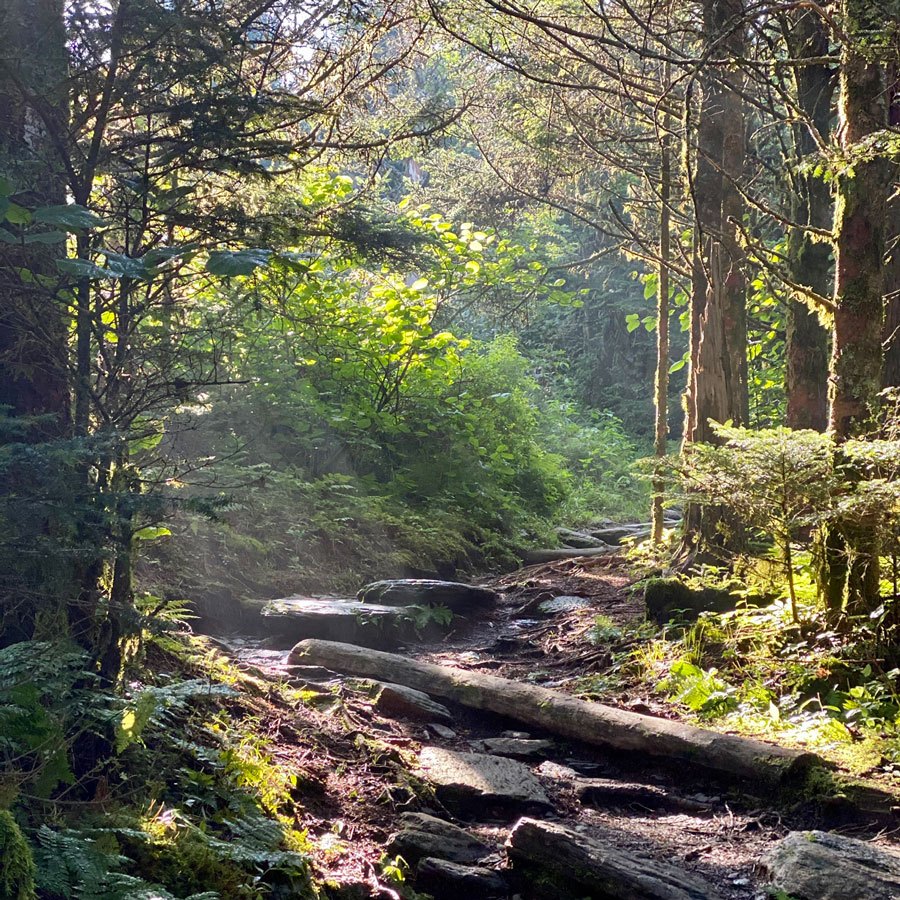
Photo by Sam Roberts
Beauty is something we experience spiritually, intuitively, and viscerally. When we witness it, we rarely want to speak of it, to whittle it down with words and explanations of what it is we’re seeing and feeling. (This may be why we can often barely muster more than a “Wow!” or “Oooh!” when we come across a pink-orange sunset or a deep canyon or looming mountain.) Beauty, especially natural beauty, allows us to bypass the intellect and go even deeper, straight to the heart.
Ironically, putting hikers in the way of beauty was not a major motivation for Trail visionary Benton MacKaye. He envisioned the Trail as a place where people could study its nature — its geology and biology and ecology — and that feeding the mind in this way would give Trail users that sense of contentment and fulfillment that he sensed so many urban denizens needed. He certainly understood that the A.T. would have pleasing aesthetic qualities, but in his vision, he thought those attributes would be put to use in some intellectual way, through painting, planning, or some other means. On a mountaintop, MacKaye noted, “there would be a chance to catch a breath, to study the dynamic forces of nature and the possibilities of shifting to them the burdens now carried on the backs of men.”
He wasn’t wrong, of course, but his vision, as broad-minded and far-reaching as it was, had some blind spots. It could be that, by the Second Industrial Revolution that MacKaye had grown up with, the notion of beauty had long since lost its spiritual significance in the collective mind. For Indigenous people, for instance, beauty is often intrinsically woven into the fabric of life. In the Navajo culture, for example, the concept of “beauty and balance” is embodied in the word hózhó — which encompasses the idea that beauty means harmony. A beautiful landscape, then, is a harmonious and healthy one.
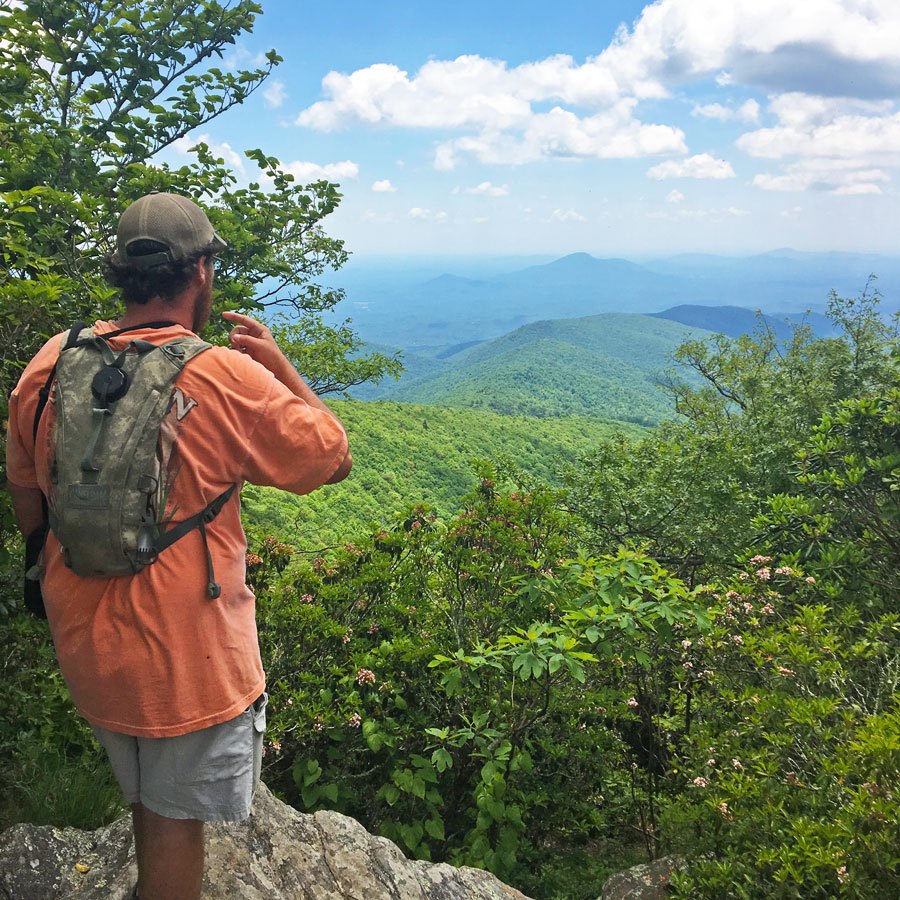
Photo by Katlyn Kelly
What countless hikers have discovered in the century since MacKaye envisioned his trans-Appalachian route is that its beauty is one of its most significant aspects. What makes the Trail’s beauty so special, furthermore, is that it comes in so many forms. The mountains and valleys, the tunnel of trees, the way the water trickles and freezes on the side of rocks, the jewel-like autumn foliage, the fuzz on a nest of baby birds, or how the green-gold leaves of early spring pop out like caterpillars. There is auditory and tactile beauty to be found here, as well — the feeling of warm grass beneath your legs at a shelter. The brittle snap of twigs beneath your feet. The smell of a propane-fueled camp stove. The trilling birds and bugs, day and night.
Part of what helps beauty to be enjoyed emotionally and viscerally is its subjectivity; it’s truly in the eye of the beholder. There is no scientific hypothesis about whether something is beautiful that can be tested in a lab, although scientists could survey people on the types of things that they find beautiful. But there is no one universal definition of the beauty found along the trail, and in this way, the A.T. is a great equalizer — a great democratizer. It allows people to find what they themselves believe to be beautiful and therefore harmonious and worthy and good. And all that goodness makes it worthy of protection.
As Harvard philosophy fellow Michael Popejoy once wrote, “This view of nature includes an inherent call to protect that which is true, good, and beautiful. These are the things that we as human beings are searching for, are striving after, and yet they are right in front of us if only we would listen with our ear to the Earth.”
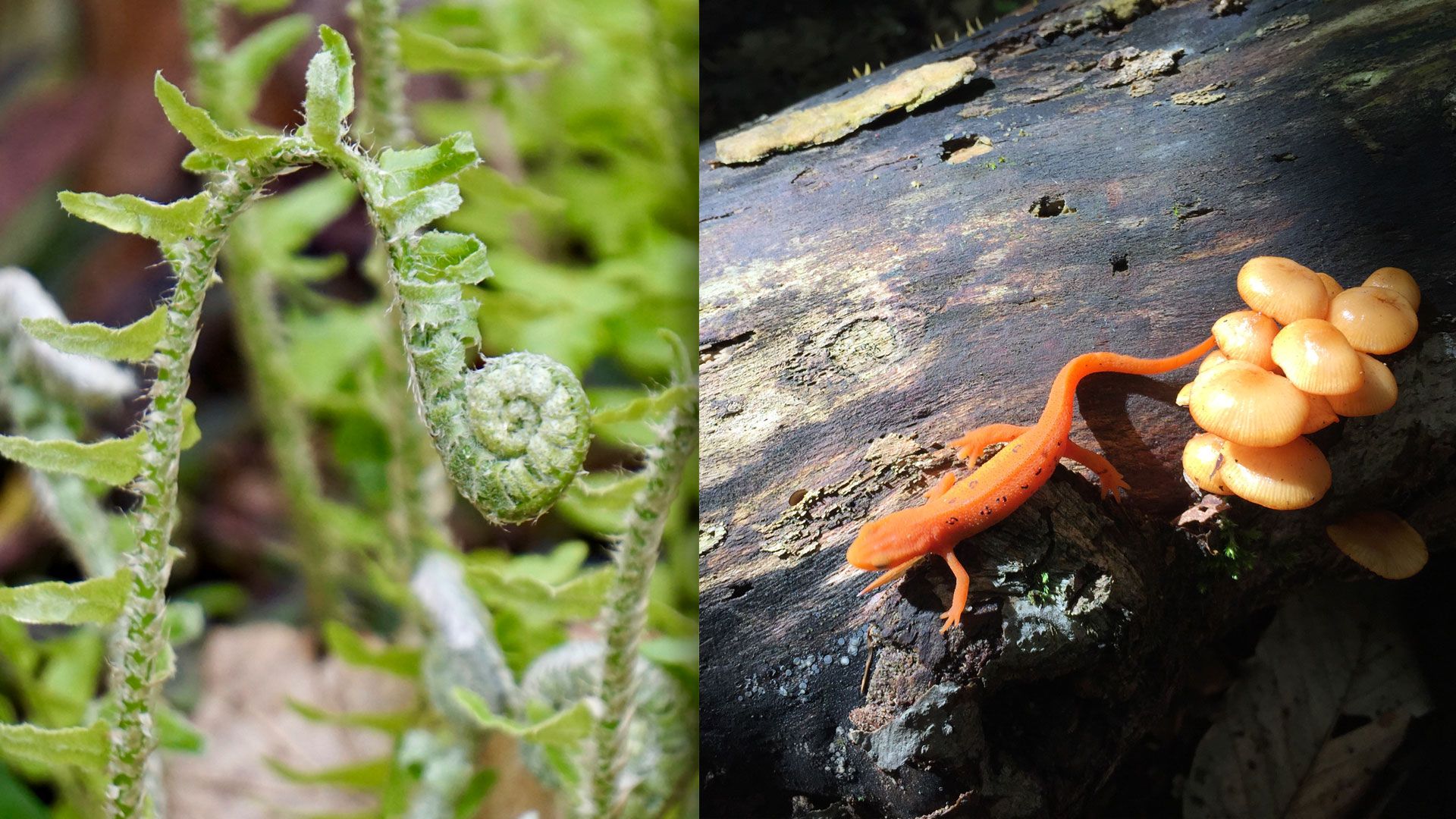
From left: Fiddlehead ferns near Angels Rest (Courtney Grohs); and an eastern red-spotted newt (Shelley “WonderWoman” Hurtado).
Perhaps most importantly, something may be beautiful because it is so rare or so unexpected, and the A.T. provides us with many opportunities to witness that, too — berries popping out of an evergreen bush on a dreary winter day, or the weeds pushing through a crack in the pavement at a wayside, or someone sharing food from their pack just when you’d eaten your last apple.
Out on the A.T., by living and walking so close to the earth, we become dirty and sweaty and stinky. We learn to work around our own limitations and accept our imperfections. How ironic, in that state, that we can look at a beautiful ridgeline and waterfall and not feel like we don’t belong. And, in doing that, we find beauty and harmony in the most unexpected place of all — ourselves.
Based in Arlington, Virginia, Kim O’Connell writes often about nature, science, and history. Learn more: kimaoconnell.com.
In Other News…

Walk the Distance Promo Raises $7,500 for A.T. Conservation
In June, Walk the Distance partnered with the ATC for a special promotion that resulted in over $7,500 in donations. Thank you to Walk the Distance and all of our supporters! Missed the promotion? You can still get the app for iOS and Android at walkthedistanceapp.com.
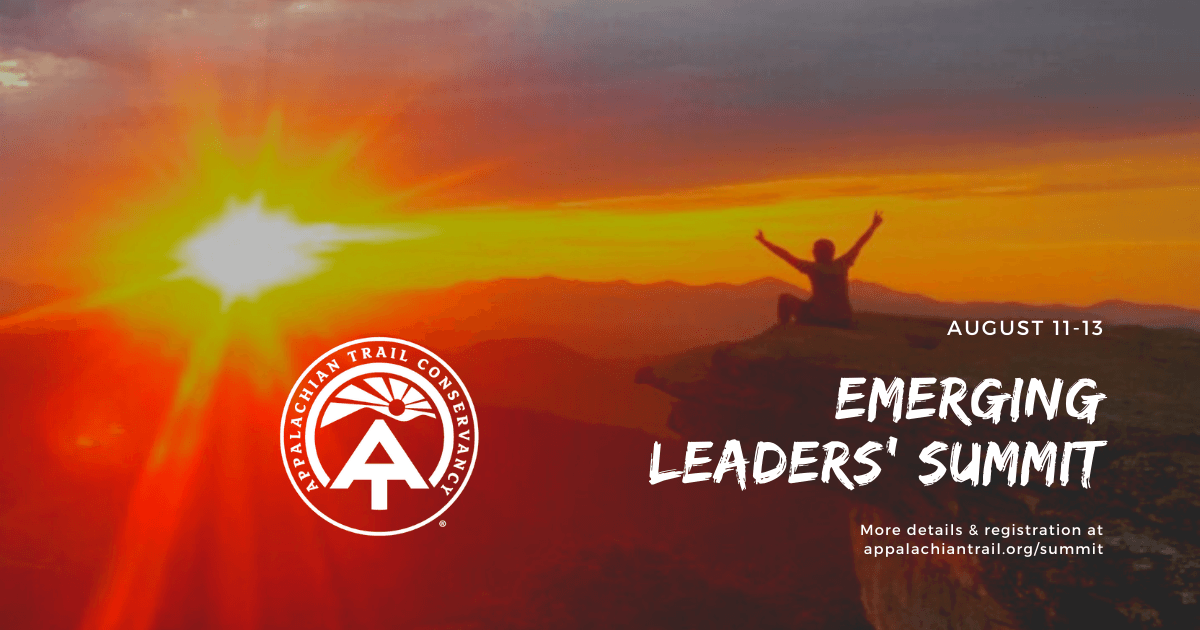
Join the Emerging Leaders’ Summit
Individuals between ages 14-35 are invited to register for the three-day virtual Emerging Leaders’ Summit, which takes place August 11-13, 2021! Learn more about the community and opportunities provided by the Summit here.

Want to be featured in our community spotlight? Follow us on Instagram at @appalachiantrail and use #atcspotlight in your post!
Happy Trails!
Please donate today to ensure the A.T. we all love benefits us today, tomorrow, and for generations to come.

